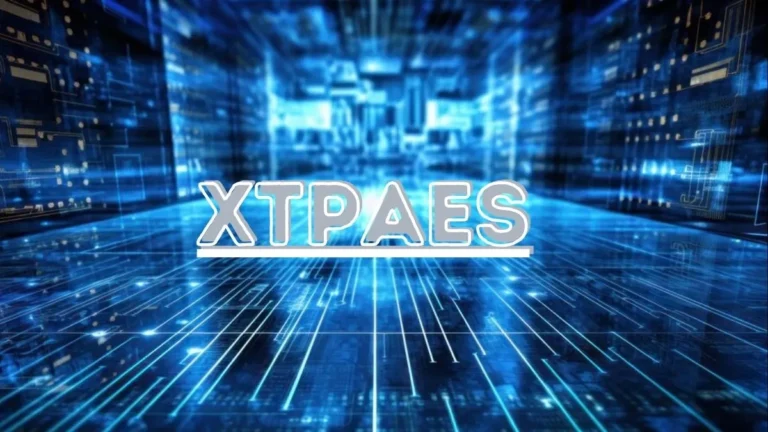In the ever-evolving xtpaes landscape of statistics safety, in which threats loom massive and breaches may have catastrophic effects, the want for sturdy encryption technology has never been more important. Enter XTPAES, a modern encryption technology poised to revolutionize the manner we shield touchy records within the digital age.
Understanding xtpaes
xtpaes, short for Extended Tiny Power Analysis Enhanced Security, is a present-day encryption approach that mixes the strengths of both the Tiny Encryption Algorithm (TEA) and Advanced Encryption Standard (AES). Developed by a team of cryptography professionals, XTPAES represents a widespread jump ahead in safeguarding facts in opposition to a huge variety of cyber threats, inclusive of brute force assaults, aspect-channel assaults, and energy analysis assaults.
The Evolution of Encryption
To appreciate the importance of xtpaes, it is crucial to understand their predecessors. TEA, brought in the mid-nineties, gained recognition for its simplicity and performance in hardware implementations. However, as computing energy advanced, TEA’s vulnerability to brute pressure attacks became apparent, necessitating the improvement of extra robust encryption algorithms.
This caused the vast adoption of AES, a symmetric encryption preferred endorsed via the U.S. National Institute of Standards and Technology (NIST). AES offered a high level of protection and became the gold well-known for statistics encryption across numerous industries. However, even AES isn’t always impervious to all styles of attacks, mainly those leveraging aspect-channel vulnerabilities.
The Power of XTPAES
XTPAES addresses the restrictions of each TEA and AES even as introducing progressive functions to enhance protection in addition. By combining elements of TEA’s simplicity with AES’s robustness, xtpaes achieves a delicate balance between performance and resilience. Its prolonged abilities consist of more suitable resistance to electricity evaluation attacks, a sophisticated form of cryptanalysis that exploits versions in energy intake to extract cryptographic keys.
One of the key advantages of xtpaes is its adaptability to diverse computing environments. Whether deployed in resource-restrained embedded structures or high-overall performance servers, XTPAES offers optimized performance without compromising security. This versatility makes it an attractive desire for an extensive range of applications, from IoT devices and mobile systems to cloud-primarily based services and essential infrastructure.
The Role of Power Analysis
Power analysis assaults constitute a powerful hazard to traditional encryption schemes, in particular in eventualities in which attackers have a physical right of entry to the cryptographic device. By tracking electricity intake patterns for the duration of encryption operations, adversaries can infer sensitive facts consisting of secret keys, undermining the safety of the device.
XTPAES employs innovative countermeasures to thwart energy evaluation assaults efficaciously. Through careful layout issues and algorithmic improvements, XTPAES minimizes the leakage of touchy records via strength intake channels, thereby bolstering the overall safety posture of the system.
Applications in Real-World Scenarios
The adoption of XTPAES holds giant promise throughout numerous sectors in which facts protection is paramount. In the world of IoT, wherein billions of interconnected devices trade sensitive records, XTPAES gives sturdy protection against ability attacks, making sure of the integrity and confidentiality of data transmissions.
Furthermore, in industries including healthcare and finance, in which regulatory compliance mandates stringent information safety measures, XTPAES presents a truthful encryption answer that meets the most rigorous security requirements. By leveraging XTPAES, groups can guard sensitive patient information, financial transactions, and highbrow belongings from unauthorized get admission and manipulation.
Challenges and Future Directions
While XTPAES represents an enormous advancement in statistics protection, challenges continue to be in its giant adoption and deployment. One such challenge is the combination of XTPES into existing cryptographic frameworks and protocols, ensuring seamless interoperability with legacy structures and packages.
Additionally, as cyber threats continue to adapt, ongoing research and improvement efforts are necessary to live in advance of adversaries. This entails exploring new attack vectors, refining cryptographic techniques, and enhancing the resilience of encryption algorithms like TPAES in opposition to rising threats.
Looking ahead, the destiny of XPAES and different encryption technologies lies in collaboration and innovation.
Conclusion
In a technology described with the aid of ubiquitous connectivity and incessant cyber threats, the want for robust encryption technology has in no way been extra urgent. XTPAES stands at the vanguard of this technological revolution, providing strong protection against state-of-the-art adversaries and ensuring the confidentiality, integrity, and availability of sensitive records in an increasingly more interconnected international.
As groups attempt to guard their property and maintain the consideration of their stakeholders, the adoption of xtpaes represents a strategic investment in cybersecurity resilience. By embracing innovation and staying vigilant against rising threats, we can harness the whole capacity of XTPAES to guard our digital destiny.
